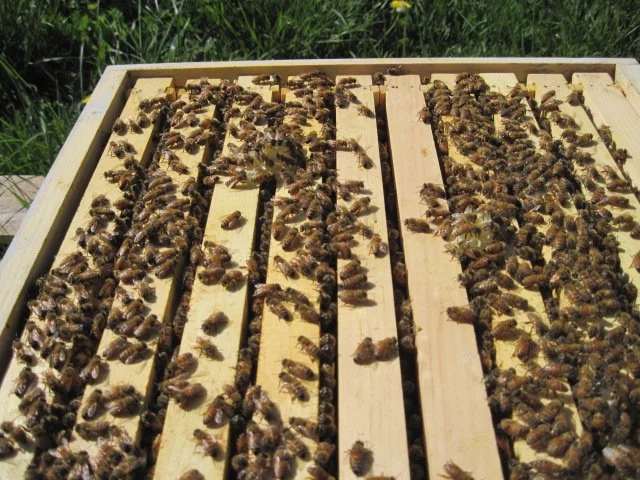If you’ve considered getting honey bees and want to learn what it entails, here’s some info that can help you get started on this adventure.
I got interested in beekeeping after college and since my family uses a lot of honey, it seemed like a good idea to explore and and give it a try. I have been beekeeping for 8 years now, three years in SE Minnesota and five years here in Isanti (north of the Twin Cities). And although I’ve been doing it for a while now, I don’t claim to be an expert. I’m always learning something new every year, either about the honey bee or how I can be a better keeper to them. I’ve had both successes and failures when it comes to keeping bees in a northern climate.
With that said, I have learned a lot that could be helpful to someone getting started. Here are some suggestions based on my experience.
For starters, keep in mind that beekeeping is an expensive hobby. Expect to spend around $700-$900 per hive the first year in equipment and bees. It’s recommended to start with new wood as there are risks of introducing diseases with old hives. We’ll discuss this more in part 2.
Bee Educated!
Now, in the winter, is the best time to start planning for your hives and taking a few beekeeping classes. It’s important to have a basic knowledge about honey bees, pests, diseases, and what to look for when making hive inspections. There are a number of local beekeeping classes. Contact your local bee club. The University of Minnesota Bee Lab also offers beekeeping classes and resources.
There are also a lot of books and info on the internet that can be helpful. Remember to check whether your sources are relevant to a northern climate, as beekeeping practices can vary based on locality. I like to follow Nature’s Nectar blog with tips and videos about what’s going on in the bee yard in a given month. Their old blog, “What Should I Be Doing with My Bees This Month,” is still available with years of bee advise.
Another good idea is to join a local bee club and learn from seasoned beekeepers. I also think having a local mentor would have been helpful when I got started.
Ordering Honey Bees:
Many beekeepers will suggest starting with two hives so you can compare their progress through the season. Also if you lose a swarm or one is weak, you can transfer brood over or combine them if needed. Now if this is cost prohibited, you can still start with one and get your feet wet.
Since living up here, I've ordered my 3 lb bee packages from Nature's Nectar LLC, Oakdale, MN. They have a pick up day in early April and one in mid April. The exact dates depend on when the supplier in northern CA is able to ship.
I've had Italian and Saskatraz in the past and last year I tried a Carniolan. Can't say I've had better luck with one breed over the others. A lot has to do with management. There are differences between the breeds that is good to know when picking your bees. Do your own research but here are a few traits of these three breeds mentioned by Olivarez Honey Bees.
Italian traits:
Gentle and easy to manage (a good "beginner bee")
Prolific brood producers
Highly hygienic (OHB’s are infused with the “Minnesota Hygenic” and the “VSH” traits to enhance disease and mite resistance or tolerance.
Good comb builders
Excellent foragers
Excellent honey producers
Saskatraz traits:
Excellent honey production
Good wintering ability
Selected for increased varroa tolerance and resistance to brood diseases
Show increased hygienic behavior
Carniolan:
A good choice for colder climates
More likely to forage on cool, wet days than other bees
Quick to brood up when nectar is available
Excellent honey producers
If you know someone interested in beekeeping, share this article and sign up for our email below for more homestead content!
